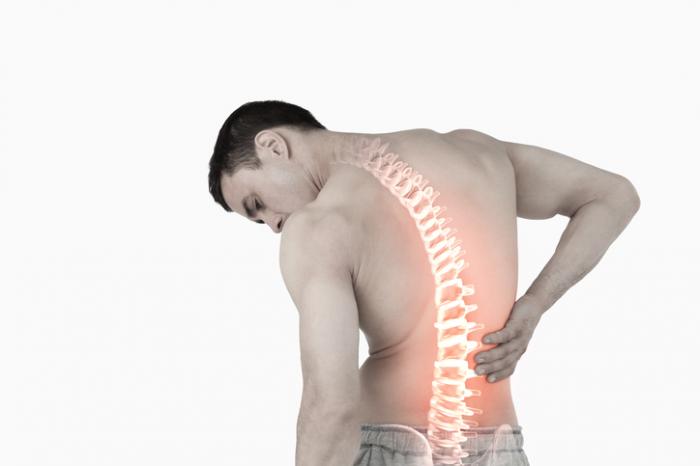Pain is a complex and unpleasant sensory and emotional experience that can range from mild discomfort to intense agony. It often serves as an important warning sign of disease or injury in the body, alerting us to potential danger or harm. Pain also has psychological components such as fear, depression, anxiety, and anger that can make it even more difficult for people to cope with it.
The experience of pain varies widely from person to person based on individual factors like age, gender identity, and overall health condition. In some cases, people may be able to tolerate certain levels of pain better than others due in part because they have developed coping mechanisms over time through experience or external influences such as family life events or religious teachings.
Additionally, the severity of pain experienced someone may depend on their mental state at the time including any feelings caused stressors like work deadlines, financial worries, etc.
In order to diagnose and treat pain, medical professionals often use imaging and radiology technologies like X-rays, magnetic resonance imaging (MRI), computed tomography (CT) scans, and ultrasound. By using these tools they can observe the internal structures of the body in order to determine the source of pain as well as its severity.
Once a diagnosis is made, it may be necessary for a healthcare provider to recommend certain treatments such as medications or physical therapy in order to manage that person’s specific kind of pain. Pain management is an important aspect of overall patient care since it not only helps alleviate discomfort but also allows people to function better on a daily basis improving their quality of life overall.
Why do We Hurt?
We’ve all felt pain, but why do we hurt? Pain is our body’s natural way of alerting us to the fact that something is wrong and needs to be addressed. It can range in intensity from a mild ache to an agonizing jolt, but no matter what it feels like, pain serves as our first line of defense against injury or disease.
When we feel pain, certain changes occur in our brains that cause us distress and discomfort. These include:
- An increase in activity in the thalamus:
- This simply means that the thalamus, a part of the brain responsible for relaying sensory information to the cerebral cortex, becomes more active when we experience pain.
- An increase in activity in certain areas of the prefrontal cortex:
- This region is thought to be involved with our ability to interpret and make sense of painful stimuli.
- Activation of limbic structures:
- The limbic system is made up of several different parts that are all connected and help us process emotions such as fear or anxiety. When we hurt, this area can become activated which may lead to feelings like distress or sadness.
- Alterations in neurotransmitter levels:
- Neurotransmitters are chemicals that transmit signals from one nerve cell (neuron) across a synapse (the gap between neurons). Painful sensations can cause changes in neurotransmitter release which could affect how our brains interpret those signals and ultimately how much discomfort they cause us.
- Changes in hormone levels:
- Hormones also play an important role when it comes to experiencing pain since they influence both physical responses like inflammation as well as psychological ones such as mood regulation or stress management abilities.
Pain can also have long-term effects on mental health because chronic conditions tend to be psychologically draining due to their continuous presence over time. This can lead to feelings of depression, anxiety, and irritability which can further complicate the experience of pain and make it even harder for people to cope with on a daily basis.
Chronic pain is defined as any type of persistent discomfort that lasts for longer than three months or more. Common chronic pain conditions include:
- Arthritis:
- This condition causes the joints to become inflamed, leading to stiffness, swelling, and discomfort.
- Fibromyalgia:
- This is a disorder that causes pain throughout the body as well as fatigue and cognitive difficulties.
- Migraines:
- These are severe headaches usually accompanied nausea or vomiting that can last for days at a time.
- Low back pain:
- This type of chronic pain typically presents itself around the lower spine and can range from mild to severe in intensity depending on its cause.
- Neuropathic Pain:
- This occurs when nerves become damaged which leads them to send incorrect signals of distress resulting in sensations such as burning or tingling all over the body even when no stimulus has been applied directly onto it (such as touching).
It’s important for people suffering from chronic pain conditions like these to seek professional help so they can find relief from their symptoms without having long-term negative effects on their overall health and well-being. Doctors may recommend medications, physical therapy, lifestyle modifications such as stress management techniques, or dietary changes in order to help manage the pain and improve the quality of life.
Common Pain Management Techniques
Pain management is a key component of overall health and well-being. It involves finding ways to reduce the amount of physical discomfort one might be feeling while also minimizing any associated negative psychological effects that may come with it. There are many different techniques available to help manage pain, some more effective than others depending on the individual’s situation and needs.
Common methods for managing pain include:
- Medication:
- Painkillers like non-steroidal anti-inflammatory drugs (NSAIDs), opioids, or antidepressants can all be used to help alleviate milder forms of acute or chronic discomfort.
- Physical Therapy/Exercise:
- This is usually the first line of defense when it comes to pain management since it can help strengthen muscles, reduce inflammation, and improve flexibility.
- Massage/Acupuncture:
- These techniques involve applying pressure or needles in certain areas of the body in order to stimulate nerves and release endorphins which can help with pain relief.
- Mindfulness Meditation:
- This is a form of relaxation that involves focusing on one’s breath or body sensations for a few minutes at a time, allowing them to become more aware of their physical state as well as any potential sources of stress that could be contributing to their discomfort.
- Biofeedback/Hypnosis:
- Biofeedback helps people gain control over physiological processes such as heart rate while hypnosis works guiding the person into an altered consciousness where they may be better able to block out distractions and focus on healing instead.
- Cognitive Behavioral Therapy (CBT):
- CBT is used in many different settings but has been found particularly helpful when it comes to addressing emotional issues like depression or anxiety which are often associated with chronic pain conditions due to its ability to teach self-management strategies through various exercises and activities designed specifically for each individual’s needs and goals.

For some individuals, however, these methods alone may not provide enough relief from their pain and they may need to turn to more invasive procedures such as nerve blocks or injections. In these cases, it is important for people to consult with a doctor or an orthopedic surgeon before attempting any type of treatment since some of them can be risky if done improperly or without professional supervision.
It’s best to see a doctor before starting any kind of pain management technique because:
- They can assess your condition:
- This is important because it allows them to make sure the treatment you are considering is appropriate for your individual needs.
- They can advise on safety:
- Depending on what kind of technique you’re thinking about trying, it could be unsafe if not done correctly or with proper supervision.
- They can provide alternative options:
- Your doctor may have other suggestions that could be more effective and less risky than the one you had in mind.
- They can monitor your progress:
- It’s important to track how well a certain technique is working so adjustments or different treatments may need to be made over time as necessary.
- They understand all aspects of pain management better than anyone else would since they have experience and knowledge in this area which makes it easier for them to give an informed opinion when it comes time for decision-making regarding patient care plans related to pain relief strategies.
No matter what kind of method someone chooses, there are always potential risks involved but being aware of these beforehand helps minimize any dangers associated with pursuing some form of pain management technique so people get back on their feet as soon as possible without sacrificing their health in the process!
Finding Relief
Pain is never fun. It can be debilitating, limit our ability to do the things we love, and make everyday activities much more difficult than they need to be. Living with chronic pain can also lead to feelings of sadness or depression due to its constant presence in one’s life which makes it even harder for people who suffer from it on a daily basis.
Finding relief from this kind of discomfort is always welcome news! Whether through medications, physical therapy exercises, massage therapy sessions, or other options like acupuncture – having access to treatment options that help reduce the intensity and frequency of painful episodes brings much comfort and peace-of-mind for those affected them as well as their loved ones who are supporting them along the way.




